At Bakinglab, we collect considerable amounts of fruit pulp every day. This pulp is the residue of the juices we make in our juicer, and is generally considered as a disposable byproduct. Yet, this pulp can be a great source of flavor and fiber if you let it, and it is as tasty as it is healthy. All it needs is some creativity for it to be incorporated in your (daily) cooking and baking. Here at Baking Lab, we like to explore new ways to reduce food waste and are taking our next step in circularity in our project called: Pulp Fiction.
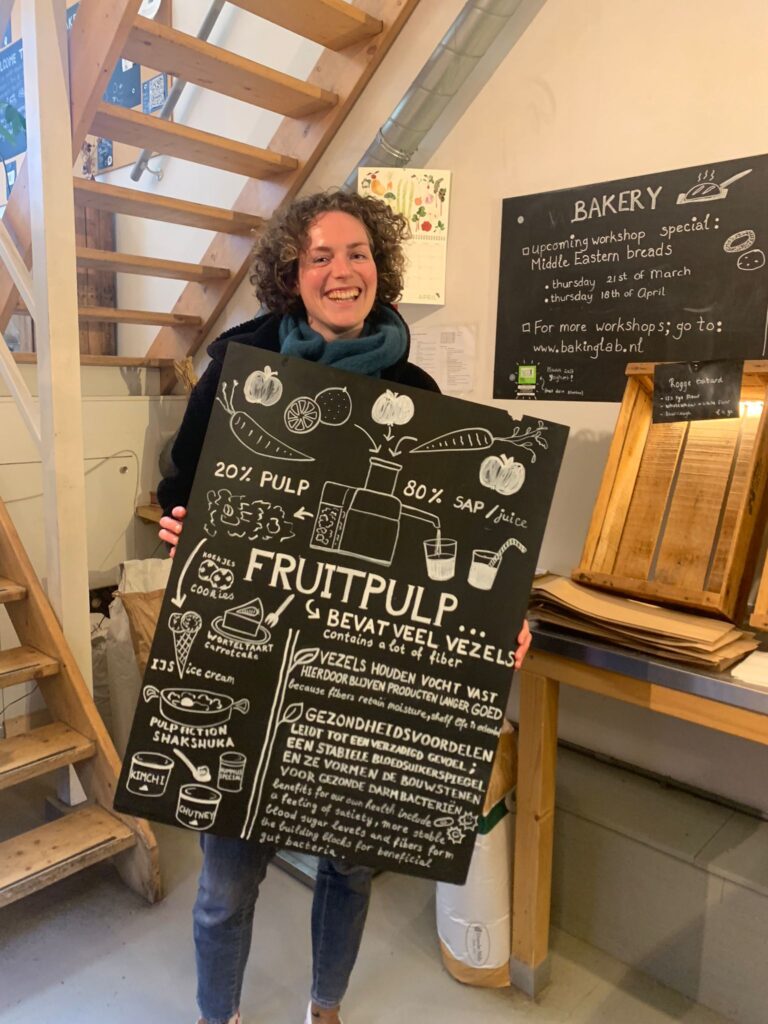
The pulp we generate consists of (mostly) the solid compounds of apples, carrots and ginger. While proportions obviously depend on the fruit and/or vegetable and even on the season, apples and carrots generally contain 80% of water and soluble compounds and 20% of solids. This means that approximately 20% of the vegetables and fruits we put in the juicer end up as pulp, and 80% will become juice. Dietary fibers usually make up around 2.5-3% of an apple or (winter)carrot. As most fibers are insoluble, the majority is filtered from the juice and ends up in the pulp. Pulp is thus a great source of fiber!
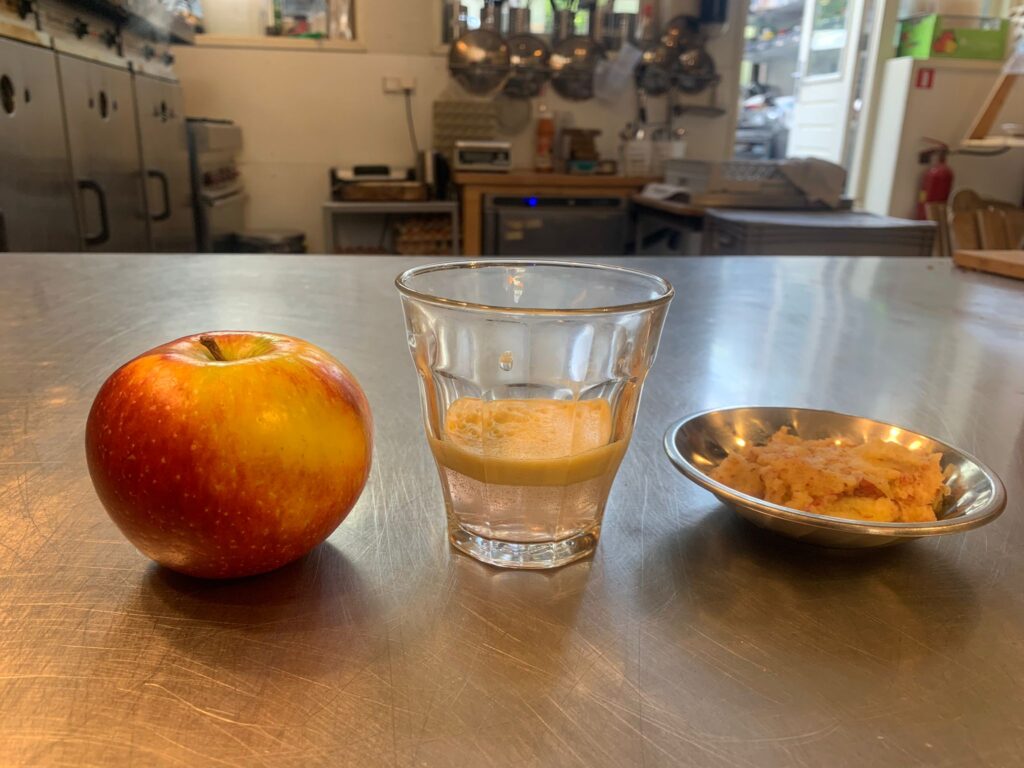
What are dietary fibers exactly?
Dietary or fruit fibers are essential components of plant structures. In plants, these fibers provide structural support, contributing to the integrity and resilience of fruits and other plant parts. In other words, fibers give plants their form! Fibers mostly originate from the cell walls of long plant cells that are made of lignin, cellulose, hemi-cellulose and/or pectin. These long strong cells often occur in bundles or stands and can be found anywhere in the plant body.
Roles of fibers in foods
Besides providing mechanical integrity, plant fibers can absorb a lot of water. Its capacity to bind water comes from its hydrophilic chemical composition, containing i.a. functional hydroxyl groups. Its capacity to absorb moisture is useful for food production as it allows us to add more water to our products, preventing food staling. Also, its water retaining properties prevent spoiling and thus extend product shelf life.
Fibers and human health
Last but not least, it is important to note that fibers are healthy! In fact, they are an essential part of a healthy diet. Their effects on health are multi-faced, ranging from increasing satiation and balancing blood sugar levels to increasing bowel activity, and supporting a healthy microbiome.
Our Products (and ideas to use them)
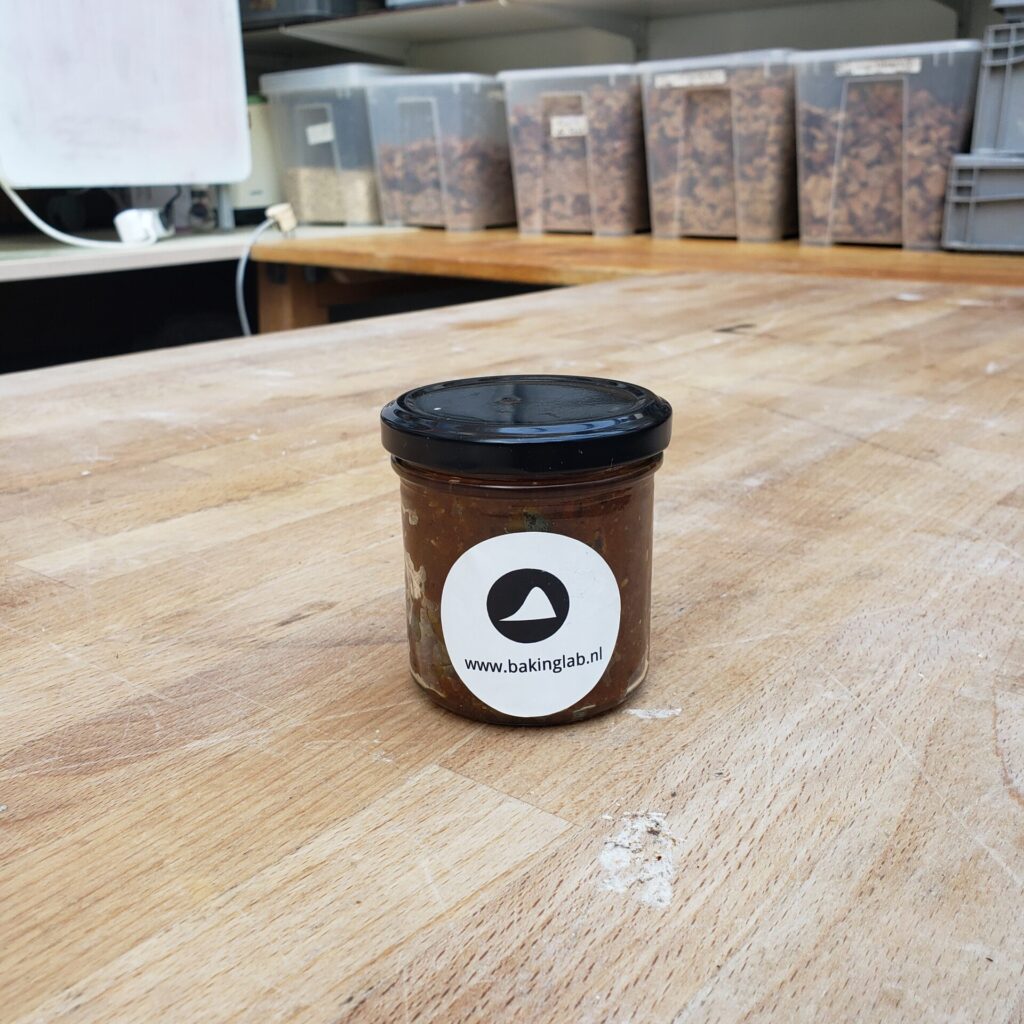
Hummus Special
This is a secret Baking Lab recipe, and a staff favorite. Lots of beautifully complementary ingredients, including the pulp from our juicer. On a bread toast or a pita, spread hummus and top with a bit of hummus special. This will bring a nice sweet and sour as well as salty flavor, very complementary to the creamy and earthy flavors of hummus.
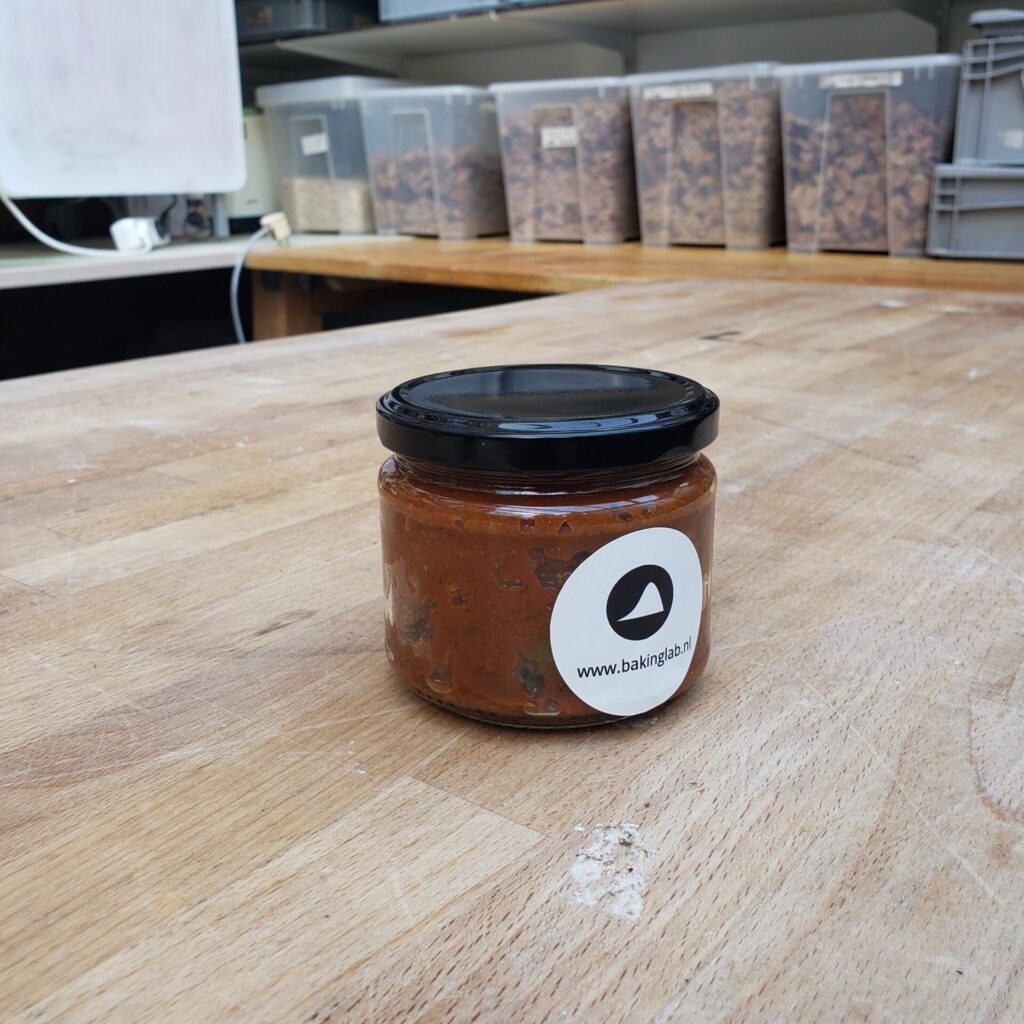
Tomato Chutney
Tomatoes will bring so much umami flavors, and they also have a lot of water! The pulp will thicken this paste while giving it some texture and sweetness. Make a cow cheese tosti and instead of ketchup, use tomato chutney to dip your tosti in. Some beautiful umami flavors will arise.
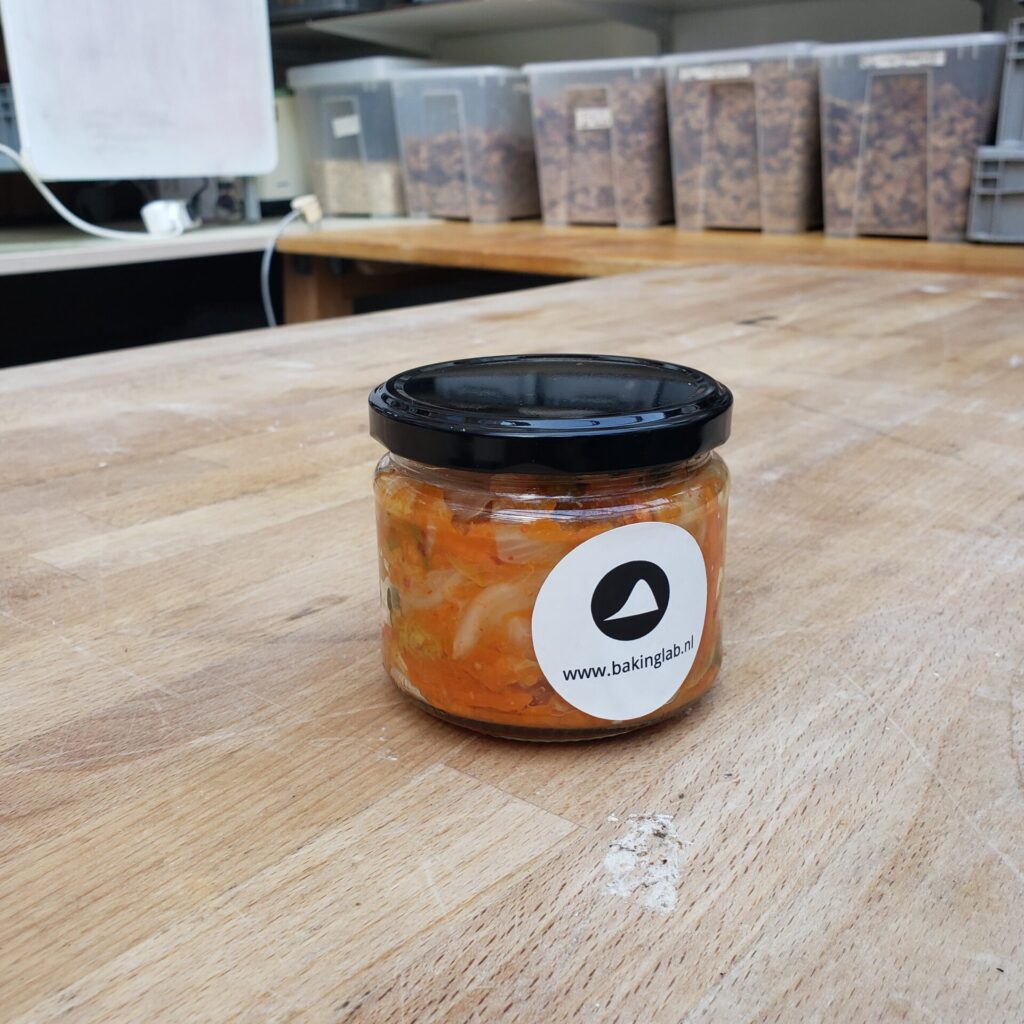
Kimchi
Kimchi has a lot of ginger and carrots, and so do our juices! So we add pulp to our kimchi, along with the traditional cabbage. Make a goat cheese tosti and when it’s ready open it up and add a bit of kimchi inside. This will bring some nice sourness from the fermentation and freshness from the ginger.
Let’s get back to the science behind the fibers inside the fruit pulp…
Fiber and satiation
Fibers retain water and thus form a gel-like substance in the intestines. This gel increases the volume of intestinal contents, leading to a feeling of satiety and slowing down gastric emptying. This means that fiber-rich foods give you a feeling of fullness for longer and help you eat less between meals, which can be helpful if you’re looking to lose a bit of weight.
Fibers and the blood sugar balance
Additionally, fibers can help prevent rapid fluctuations in blood sugar levels after a meal. Foods high in fiber generally have a lower glycemic index, meaning they are digested more slowly and release glucose more gradually into the bloodstream. This can help prevent spikes and crashes in blood sugar levels, which is beneficial for both energy levels and overall long-term health. Consequently, a fiber-rich diet is associated with a reduced risk of heart disease, colon cancer, obesity, and diabetes.
Fibers, bowel activity and the microbiome
Our intestines are home to billions of bacteria, many of which play a crucial role in our health. Fibers act as prebiotics, meaning they stimulate the growth and activity of beneficial gut bacteria. These good bacteria break down fibers and produce short-chain fatty acids (SCFAs), such as butyrate, acetate, and propionate, which offer a wide range of benefits for our health. Primarily, SCFAs help maintain a healthy intestinal barrier, crucial for reducing inflammation in the digestive tract. They also exhibit anti-inflammatory effects by suppressing the production of cytokines, beneficial for conditions like irritable bowel syndrome (IBS) and inflammatory bowel disease (IBD). Furthermore, SCFAs serve as an energy source for cells in the intestinal wall and can contribute to reducing cholesterol levels in the blood, thereby reducing the risk of heart disease. A balanced gut flora is also linked to a healthy immune system, as about 70% of our immune system is located in our intestines.
Altogether, fruit fibers serve as indispensable components of both plant structures and human nutrition. Their multifaceted roles in promoting digestive, metabolic, and cardiovascular health underscore their importance in maintaining overall well-being. Applying fiber-rich fruit pulp fiction in your cooking and baking thus not only increases circularity, it is also very healthy! Join the experimentation and enjoy the benefits.
What about you? What edible products end up in your bin? And how can you reincorporate them in your dishes?
